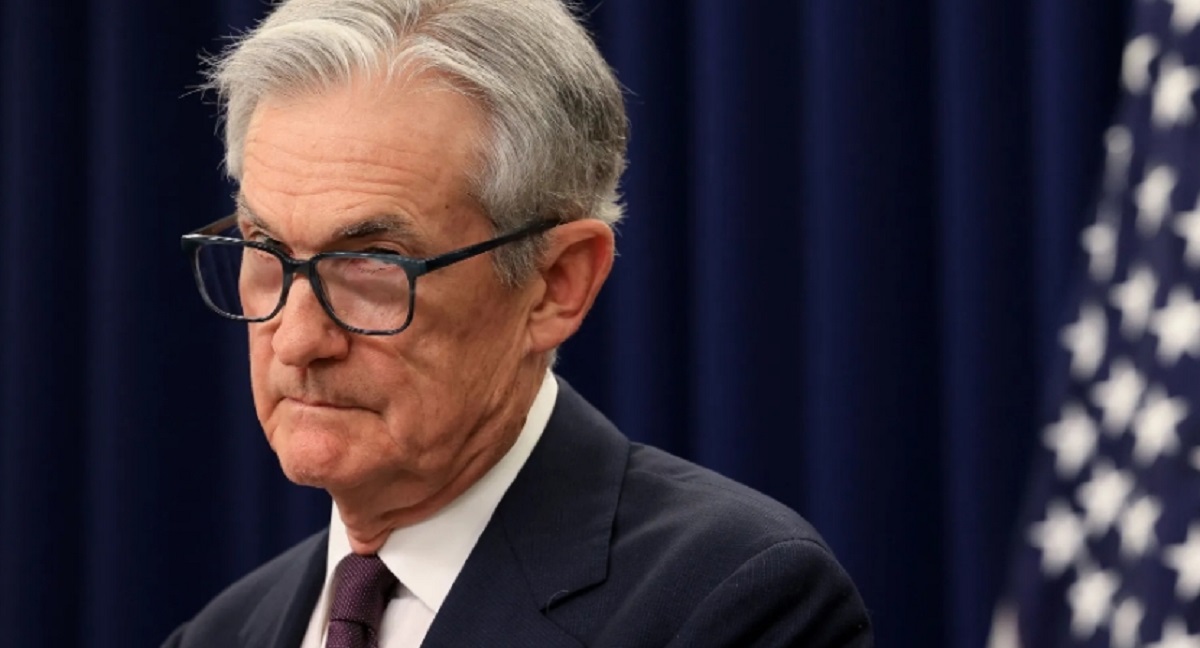Trump Slams Powell for Not Cutting Rates, Calls Him ‘Destructive’
President Donald Trump unleashed a fresh barrage of criticism against Federal Reserve Chair Jerome Powell on Thursday, branding him “destructive” and accusing him of costing the U.S. economy “hundreds

President Donald Trump unleashed a fresh barrage of criticism against Federal Reserve Chair Jerome Powell on Thursday, branding him “destructive” and accusing him of costing the U.S. economy “hundreds of billions of dollars” by refusing to lower interest rates.
The outburst followed the Fed’s decision on Wednesday to hold its benchmark rate steady at 4.25% to 4.5%, a range unchanged since December. Trump’s remarks, posted on Truth Social, reflect his long-standing frustration with Powell’s reluctance to slash rates despite months of public pressure from the White House.
Trump’s Relentless Critique
Trump’s latest tirade was sharp and personal.
“Too Late Powell is costing us a fortune,” he wrote, claiming the U.S. should have rates 2.5 percentage points lower to save billions on short-term debt accumulated under the Biden administration. Late Wednesday, he escalated the rhetoric, calling Powell a “real dummy” in a near-midnight post. By Thursday, he doubled down, musing aloud about appointing himself as Fed chair: “I’d do a much better job than these people.”
The president’s fixation on rate cuts isn’t new. Hours before the Fed’s announcement, Trump preemptively jabbed at Powell outside the White House, saying, “We have a stupid person. Frankly, you probably won’t cut today.” He also pointed to Europe, claiming it had seen “10 cuts” while the U.S. lagged with none, framing Powell as out of touch and politically motivated. Trump has hinted he’ll soon name his pick to replace Powell, whose term ends in May 2026, adding fuel to the ongoing feud.
The Fed Stands Firm
Powell, unfazed by the president’s broadsides, defended the Fed’s stance after the Federal Open Market Committee’s decision.
“For the time being, we are well positioned to wait to learn more about the likely course of the economy before considering any adjustments to our policies,” he said. The central bank’s caution reflects a data-driven approach, with officials seeking clearer signs of an economic slowdown before easing monetary policy. Despite Trump’s assertions, markets had widely anticipated the hold, aligning with the Fed’s signals over recent months.
The current rate range, steady since last December, underscores Powell’s focus on balancing growth and inflation risks. While Trump sees lower rates as a quick fix to boost jobs and ease debt burdens, the Fed appears more concerned with avoiding premature moves that could destabilize an economy still navigating post-pandemic recovery and global uncertainties.
Weighing the Rate-Cut Debate
Trump’s push for lower rates carries some economic logic. Cheaper borrowing costs can juice activity across key sectors. In housing, for instance, reduced mortgage rates could spur homebuying and construction, while manufacturers might ramp up investment with easier access to capital. A weaker dollar from rate cuts could also make U.S. exports more competitive, a boon for trade-reliant industries.
Yet the Fed’s hesitation isn’t baseless. Cutting rates too soon risks overheating an economy that’s shown resilience, potentially igniting inflation that erodes purchasing power. Asset bubbles—think frothy stock or real estate markets—are another worry if cheap money flows unchecked. The central bank’s wait-and-see posture suggests it’s prioritizing stability over short-term stimulus, especially with trade tensions and tariff threats looming as wild cards.
The international comparison Trump cites is shaky. The European Central Bank has indeed cut rates more aggressively, but the Eurozone faces weaker growth and lower inflation than the U.S. The Fed’s measured approach reflects a stronger domestic backdrop, not a failure of nerve.
Expert Voices Weigh In
Former Treasury Secretary Lawrence Summers offered a nuanced take on an interview with reporters. He predicts Trump will tap a “respected” mainstream figure to succeed Powell, despite the president’s bluster.
“Influenced by the desire not to gratuitously destabilize markets, and by sound voices among Republicans in the Senate, my bet is he’ll pick a reasonable person,” Summers said. Names like Treasury Secretary Scott Bessent and ex-Fed governor Kevin Warsh have surfaced as contenders.
Summers also cast Trump’s rate-cut crusade as political theater. “He’s setting up a situation where, if we have a recession, he can blame it on something other than his administration’s policies,” he argued. The former Treasury chief pointed to the Fed’s latest forecasts, which hint at a “negative supply shock”—higher inflation and unemployment—possibly tied to Trump’s tariff plans. “It’s rare for the Fed to revise up both inflation and unemployment,” Summers noted. “That’s the tariffs at work, making the Fed’s job tougher.”
Trump’s trade policies add another layer of complexity. His tariffs on Chinese goods, a signature move, could drive up costs for businesses and consumers, slowing growth while stoking inflation—a stagflationary trap. The Fed’s latest projections reflect this concern, suggesting Powell’s team is bracing for turbulence that could offset any gains from rate cuts. This dynamic may explain why the central bank is holding pat, even as Trump demands action.
The Bigger Picture
Trump’s clash with Powell isn’t just about rates—it’s a stress test for the Fed’s independence. The central bank’s ability to act on data, not political whims, has long been a pillar of U.S. economic stability. Trump’s threats to install himself or a loyalist as chair raise the specter of erosion in that autonomy, a move markets would likely punish with volatility.
For now, the Fed holds the line, betting on patience over populism. Trump’s rhetoric may grab headlines, but Powell’s calculus hinges on numbers—growth, jobs, prices—that don’t bend to Truth Social posts. As the 2024 election nears, this tug-of-war will only sharpen, with implications for monetary policy, investor confidence, and the economic road ahead.
Disclaimer: The views in this article are from the original Creator and do not represent the views or position of Hawk Insight. The content of the article is for reference, communication and learning only, and does not constitute investment advice. If it involves copyright issues, please contact us for deletion.